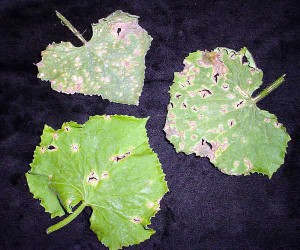 Protective measures to combat diseases and pests on orsets and tomatoes
Protective measures to combat diseases and pests on orsets and tomatoes
1. In seedlings of cucumber against pulse dew to carry out chemical immunization in the phase 2 of the present leaves by spraying with 0.05% aqueous solution (Novosyl, extrazol, Ali-Rin-B, Humat-preparations). Against false Puffy dew in the second turnover in phase 3 of the present leaves spraying only by allowed drugs.
2. In the seedlings of tomatoes in the 1st and 2nd turnover against phytoofluorosis, carry out chemical immunization of plants in the phase 3-4 of these leaves by spraying by any of the registered drugs.
3. Web tick:
Maintain air humidity not lower than 70-80%
Cut strongly populated plants
Issue to Fitosayulus foci in the ratio of a predator and a victim 1: 50. In the launched foci of phytosayulus in large quantities to ensure the initial ratio of the predator and the victim 1: 10-1: 20
In the absence of phytosayulyus - spraying by acaricides. In order to prevent the emergence of resistance acaricides, applying the rotation of drugs from equal groups
4. Tli Bakhchy, potato:
Prevent
Apply a predatory gallicle, folding 1-2 cocoon for 1 square meters. m with single foci and the absence of a winged female-elaimer. If the foci is larger and in colonies aphids found winged female elaims, an entomophage release rate to increase by 2-3 times. The ratio of time must match the predator and the victim 1: 1; 12
In the absence of a biometown and in the case of mass settlement - spraying insecticides (actar, confident (image), dance (from tool), kinmix and others
5. Ruff peach:
Prevent
Application in attic foci. Release of entomophage with a predator ratio and victim 1: 25. In case the colonies of the tool found winged female ecalatum, the rate of outdius release to increase by 2-3 times. The ratio of the predator and the victim at the same time corresponds to 1:10
In the absence of a biometown and in the case of mass settlement - the spraying of insecticides (see the list of the aforementioned drugs)
6. TRIPS:
Control over the state of the bow, grown in a greenhouse on the feather, or do not grow onions at all. Fumigation of planting material before planting by treating with one of the allowed insecticides (use the emulsion concentrate). In the vegetation, apply Act-ru or confident (image) in compliance with the waiting time for removal of products
7. Greenhouse White:
Regular removal of stepsing on tomatoes
Cutting highly populated leaves
The use of yellow adhesive traps in the seedlings
Edition to the greenhouse of Encarzia while reducing air humidity up to 70-75%. The ratio of the parasite and the owner (leapstelling larvae) on cucumbers should be 1: 5, on tomato plants - 1: 10. According to the results of the survey, En-Karzia should be produced in the process of growing cultures at least once every 12-14 days before providing recommended relations for The account of self-reproduction of it in the greenhouses.
The effectiveness of the Encarcation is higher than the lower the initial density of the population population. With an excessively high population of pests (more than 50 imago on one cucumber plant) applying En-Karzia is inappropriate
In the case of a strong prevalence of the whiteflower over Encarzia, when the ratio of the parasite and the owner is higher in two or three times in the direction of the pest from the recommended, and when the first signs of a sage mushroom appears, an analogue of the juvenile hormone of the Applaud should be applied (no supplies to Russia, but the "left" method of vegetable breeding Find not advise) is normal 0.005 g / 100 square meters. m. The flow rate of the working suspension is 18-20 liters. When applying Encarcia and Applatud, there is a decrease in the development of the white bullion by 1.5-2 months
In the absence of a biometric - spraying by insecticide actars, confident (image) (see List). Begin treatment with the appearance of the first individuals of the Imago whiteflink. Re-spraying to spend after 7-10 days in compliance with the time limits before the collection of fruits
8. Polenist Mini Fly:
When detecting on the leaves of tomatoes, the pest larvae need to be removed with subsequent destruction (combustion)
In case of strong infection (2-3 mins on the tomato plant) - chemical processing insecticides (see List)
9. Winter Scoop:
When small pest foci is detected (the pests are infected to 1-1.5-2 tomato plants per 100 square meters. M) it is necessary to thoroughly collect larvae, suppress
The use of trichograms of 1.5-2 thousand individuals per 100 square meters. m during the whole turnover. The release of trichograms produce in three receptions with an interval of 14 days. Efficiency is 70-80%
In the absence of a biometric - the use of insecticides Decis pro, Aktar (through drip irrigation and spraying with the addition of extracene and Novosyl)
10. Slug:
Thermal disinfection of soil
Application of wet bait and soil drying
11. White or gray rot:
Relative air humidity on cucumber culture to reduce up to 70%, on tomato culture - up to 60%
Systematically remove affected parts of plants, deceased plants
Pasching and pruning plants to spend in the morning hours, not leaving "hemp" (for healthy fabric)
The coating of the affected parts of plants paste from chalk, glue and systemic fungicide
Gray rot is stronger in acidic soils
When carrying out extra-root feeding with microelements and processing of fungicides containing metals salt, it is possible to increase the susceptibility to the disease
Burning tablets of the mineral complex "Greenhouse" (20 g / 40 square meters. M)
12. Root rotes:
Election of patient plants, if possible - replace them with healthy
In order to reduce harm to exclude:
1) Soil moistening (optimally 85%)
2) sharp drops of air and soil temperature during the day (the optimal temperature of the soil during the entire period of vegetation - 20-26 ° C, air is not lower than 16 ° C)
3) an increase in salt concentration in soil solution
4) Watering with cold water (optimal temperature - 20-25 ° C)
Before planting plants for a permanent place, watering the soil by the extracene at the rate of 200 ml / 100 square meters. M and introduction to the wells Glocladine - 1 tablet on the plant
After cleaning 3-4 leaves of cucumber, the coating of the root part of the stalk of the paste of the chalk, the glue of CMC and the systemic fungicide
13.Golly cucumbers - there are such:
Askohitoz cucumber:
Humidity reduced to 70%
Exclude heat, excessive watering
Burn tablet mineral complex "Greenhouse" (20 g / 40 sq. M)
Fitoprochistki removing the affected parts of the plant (crop of healthy tissue)
When pinched out to remove twigs and leaf stalks, leaving "stumps"
Greasing the affected portions of the stem and stem root neck paste of chalk, Clay CMC and systemic fungicide
Chemical treatments recommended fungicides
14. Powdery mildew of cucumber:
Observe the temperature and humidity, optimal for the culture of cucumber
Avoid condensation in the morning
Eliminate sharp cold air flows in the greenhouse
Fitoprochistka followed by treatment with fungicides
Weed control (which reserves powdery mildew) on priteplichnoy territory
Spraying with rotation systemic and contact fungicides. During the processing tanks and the mixture was added Ekstrasol Novosil or El 1
15. Downy Mildew:
To reduce the humidity to 70% and set air temperature (clock) 20-22 ° C for 5-6 days
Avoid sudden changes in temperature
Cutting heavily infected leaves
Decrease humidity due to the aerosol smoke emitted by burning tablets mineral complex "Greenhouse"
Spraying fungicides only in case of impossibility of controlling the temperature and humidity in the greenhouse
Apply biologics (Alirin-B Gamair)
When spraying formulations applied to the underside of the leaves
16. anthracosis, bacteriosis, olive and other spot:
Reduce the relative humidity to 70%, to set the air temperature 20-28 ° C
Fitoprochistki carried out starting from the first foci
Spraying Bordeaux liquid or substitutes
17. Vascular wilt of tomato (Fusari-oznoe, bacterial)
Soil Treatment Ekstrasolom, watering 2 weeks before transplanting
Processing before boarding Alirinom-B together with Gamairom
Culling of diseased plants, with the possibility of replacement by healthy, care of plants, ranging from healthy
Plant fertilizing phosphorus-potassium fertilizers
Repeated spraying the plants with 0.05% potassium permanganate solution, disinfecting the hands and instruments in the care of plants in a 5% solution of potassium permanganate (KMn04)
Control of the acidity of the soil (optimal - 5.8)
Exclude waterlogging of soil, the excess nitrogen dose
18. Common blight, southern blight of tomatoes:
Reduce air humidity up to 50-60%, prevent reduction in air temperature below optimal for plants
Carry out extractive feeding in the morning
Fitoper cleaning, removal of lower leaves
Spraying with systemic (before fruiting) and contact (copper-containing) fungicides with their rotation, the working solution is applied to the lower side of the leaves
19. Buuray spottedness of tomatoes:
Reduce air humidity in greenhouse up to 50-60%
Regularly remove lower leaves
After each watering, it is intensively ventilated and spraying with recommended drugs
Increase in temperature contributes to a decrease in the physiological stability of plants
20. Sent mushroom:
With a strong infection of plants, the colonies of greenhouse whiteflies, waves, with the advent of a sugar-tip on the upper leaves, to carry it out from the twine through the system of pesticides with warm (up to 30 ° C) with the addition of calcined soda (concentration 0.15%) or calcium nitrate (concentration 0.15%). Wash it out at least once a week
21. Viral Diseases:
Sick plants that appear at the beginning of the growing season in the seedlings and before landing, carefully selected and in the future can be replaced with healthy
Hands and tools Disinfect in a 5% manganese solution (kmn0 / 4)
Spraying of tomato plants with a 10% rope solution or a 5% solution of solid milk with the addition of trace elements.

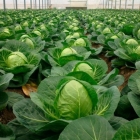
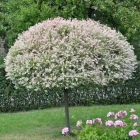
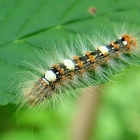
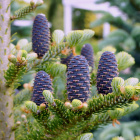
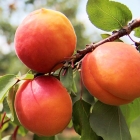
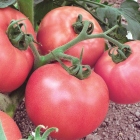
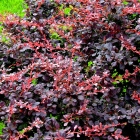

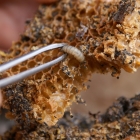

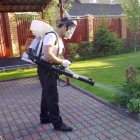
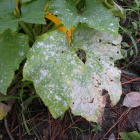
 Start a discussion ...
Start a discussion ...